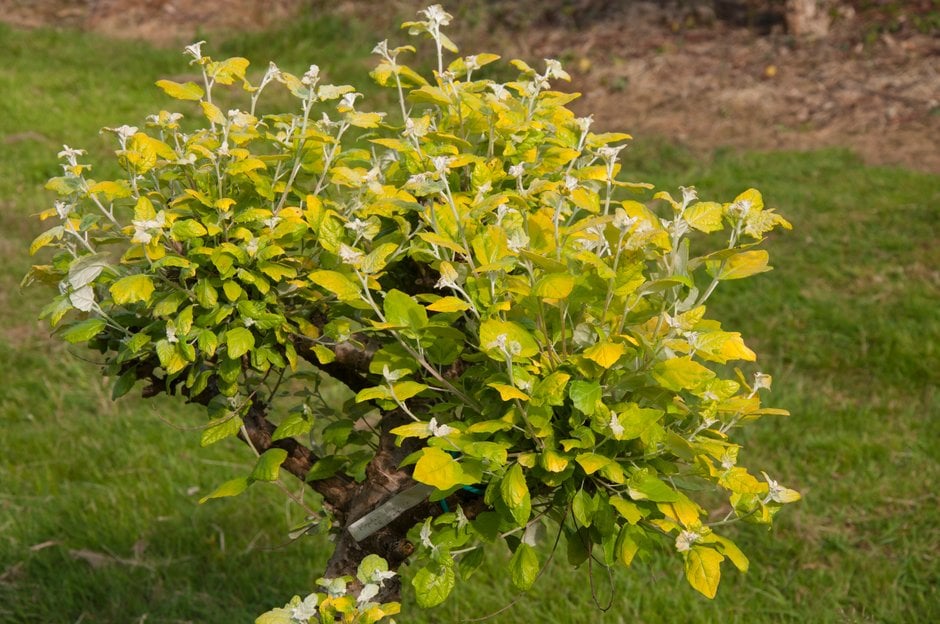Populus alba 'Richardii'
white poplar 'Richardii'
'Richardii' is a spreading, suckering, deciduous tree to about 12m with lobed leaves, greenish-yellow above, felted white beneath, and felted white young shoots. In early spring produces green female or red male catkins

Buy this plant
Size
Ultimate height
8–12 metresTime to ultimate height
20–50 yearsUltimate spread
4–8 metresGrowing conditions
Moisture
Moist but well–drained, Poorly–drained, Well–drainedpH
Acid, Alkaline, NeutralColour & scent
| Stem | Flower | Foliage | Fruit | |
| Spring | Cream | Yellow | ||
|---|---|---|---|---|
| Summer | Yellow | Purple | ||
| Autumn | Yellow | Purple | ||
| Winter | Yellow |
Position
- Full sun
Aspect
South–facing or North–facing or West–facing or East–facing
Exposure
Exposed or Sheltered Hardiness
H6Botanical details
- Family
- Salicaceae
- Native to GB / Ireland
- No
- Foliage
- Deciduous
- Habit
- Bushy
- Genus
Populus are deciduous trees, mostly very fast-growing and large, with male and female catkins on separate trees, opening before the leaves. Male catkins are the more ornamental, female ones can be a nuisance from the cottony, wind-blown seeds
- Name status
Accepted
How to grow
Cultivation
Best in deep, fertile, well-drained soil in full sun, but tolerates both damp and dry soils
Propagation
Propagate by hardwood cuttings in winter
Suggested planting locations and garden types
- Cottage and informal garden
- Low Maintenance
Pruning
Pruning group 1 or pruning group 7 for best foliage effect
Pests
May be susceptible to leaf beetles, sawflies and caterpillars
Diseases
May be susceptible to leaf spots, poplar bacterial canker, tree rusts and honey fungus
Get involved
The Royal Horticultural Society is the UK’s leading gardening charity. We aim to enrich everyone’s life through plants, and make the UK a greener and more beautiful place.